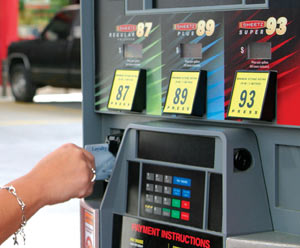News
Loyalty programs that aren't
July 21, 2005
If you asked the average consumer whether he takes part in a loyalty program, he probably would say no, even if his keychain sports several store cards.
That's because, in the minds of most shoppers, those cards represent something they must do to get the store's best price, not a reward for loyalty.
According to a recent study by Forrester Research, most loyalty programs focus too heavily on price and discounting, driving consumers to pay attention to all the wrong things.
 This story and all the great free content on KioskMarketplace is supported by: |
De-emphasize price
The price-cutting vs. value-building discussion isn't new, but now that conversation is taking place around the idea of a loyalty program. And, according to Johnson, building such a program primarily around price will backfire.
"The programs clearly aren't working," she writes. "Today's loyalty programs do the opposite of their intended value Â… This is especially true when competitors offer virtually indistinguishable programs as in the grocery or office supply industries."
Using such programs can have a negative effect on branding in the long-term because customers quickly learn to ignore other aspects, such as quality.
So if price should not be the emphasis for loyalty programs, what should?
"The hidden strength of a loyalty solution lies in linking a consumer's first visit to the next Â… and an emotional bias against competitors," said Mike Finley, vice president
 |
Loyalty systems appear in stores, from groceries to gas, and all have the same problem: A misplaced focus on price. |
"The trick, however, is to avoid spending the profit of one visit on the rewards for the next one - the operation will break even at best and consumers will react negatively when the rewards are removed."
According to Mitch Krayton, business development director for Valencia, Calif.-based 1st Kiosk, planning for the proper consumer benefit is an important step in loyalty program planning that often is skipped.
"Users always ask, `What's in it for me?' he said. "Users always want a benefit to change their behavior. People do want convenience but they also want courtesy, respect and recognition." Kiosks "don't exhibit these human traits without a carefully planned loyalty program. To do that requires great UI design, professionally developed content and a lot of real user testing. This is rarely in the budget."
As a result, Krayton said, focus turns to the things that are easily measured and put in place. It is easier to slash prices than study and understand a clientele; so many retailers go that route.
According to Johnson, retailers need to be aggressive with customer surveys, exit interviews and other research tools such as secret shoppers.
"The point of a loyalty system is that the customer can have a unique relationship with the store and the relationship gives the customer status and privileges that non-members don't get," Krayton said.
This story appeared in the Summer 2005 Retail Kiosk & Self-Service Executive Summary. It is a summary version of a longer article. Click here to see the longer version.












